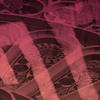Verde Visionary
The story of BUCHA BIO, a Houston-based company that creates innovative, sustainable biomaterials that can be used to design anything from apparel to automotive interiors, began in a shallow pool filled with an uninviting microbial cocktail under a bed in an apartment just west of Temple’s Main Campus in 2019.
That bed belonged to the roommate of BUCHA BIO’s CEO and founder, Zimri T. Hinshaw, CLA ’20. “It was a very small room,” Hinshaw acknowledged apologetically, “and it was very smelly.”
Hinshaw was using the space to brew kombucha, a fermented beverage made from tea, bacteria, yeast and sugar. But he wasn’t making kombucha to drink it.
Inspired by a YouTube video about kombucha-making, his interest in fashion and a fascination with the leather jackets worn by motorcycle gangs in Japan (where he had lived as a high school student), Hinshaw had come up with the idea for a business.


